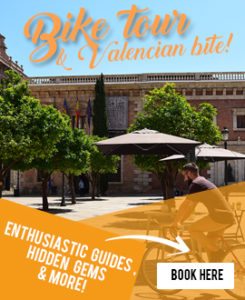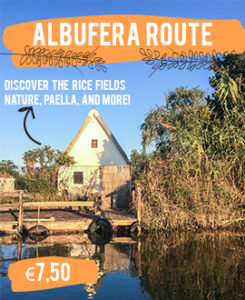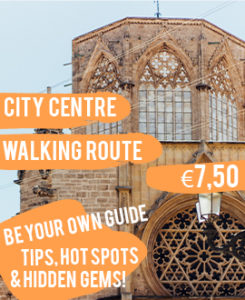The Iglesia de San Nicolás is one of the most impressive churches in Valencia. It is a parish church with more than 2000 square meter of murals and an interesting history. However, it is recommended to visit this church. Especially the ‘frescos’ are a must-see!
History of the church
The Parroquia de San Nicolás’ history is long. The church had multiple functions. It was built in the time of King Jaime l and during those years the church was a monastery for the Dominicans. Another name for the church is La Iglesia de San Nicolás de Bari y San Pedro Mártir. The church became one of the first Christian parish churches in 1242 after the Reconquista (recapture of the Moorish areas by the Spaniards). Before this time the church had a gothic style.
A while later (between 1690 and 1693) the baroque style was added. A baroque style is known for its many murals. Frequently a story is being told in these murals and in this particular church the story is about San Nicolás and San Pedro Mártir. The engineer of the church is Antionio Palominode and the murals were created by Dionís Vidal.
Next level baroque style…
However, the baroque style in this church is a little extreme. After the construction, which took three years, the walls renewed with frescos. Frescos are a typical Italian style of painting. Frescos are fascinating, because they are painted directly on the chalk. Because of this the painting looks like one part. The frescos are very impressive and because of this the Parroquia de San Nicolás is a must-see in Valencia.
Nice to know: the frescos in the Parroquia de San Nicolás take up more than 1904 square meters! Meanwhile, the Sistine Chapel in Rome (where this way of building comes from) takes up 800 square meters.
Civil war
From 1936 until 1939 the civil war took place in Valencia and the rest of Spain. Because of this war the Iglesia de San Nicolás got some serious damage. The church and chapels were destroyed, but because of this happening the church has been a National Artistic Historical Monument since 1981. Finally, there was a restoration in the 21th century. Due to this restoration we can visit this extraordinary church.
The inside of the church
The church consists of six parts and each wall is decorated with magnificent paintings. The most important painting is shown in the middle of the church. This painting is about an event in Valencian history. On the left you can see San Vicente Ferrer holding Alfosno de Borja (who is a baby in this painting). Vicente Ferrer claims that Alfonso is a prophet and he should be reaching the papacy. On the right you see Pope Calixto lll, who declares Alfonso holy.
Dionís Vidal is the one who created all the paintings in the Iglesia de San Nicolás. Dionís was a student of Antonio Palomino, who created the paintings for churches in Granada, Salamanca and the basilica in Valencia. A funny thing is that Dionís and Antonio are painted next to each other. Can you find them? Tip: they are between a golden bull and a baby.
The dome of the church is divided in twelve parts, six on both sides. Those twelve parts represent San Pedro Mártir and San Nicolás and their lives. Every part portrays a scene (a period) from the lives of these men. From the nave, on the side of the gospel (left side of the choir) you see San Pedro Mártir’s life. On the other side San Nicolás’ story is told.
Visit the church
The Parroquia de San Nicolás is located in neighbourhood ‘El Carmen’. After visiting this church you should visit the Catedral and La Lonja. Have you seen enough cultural buildings? Then Plaza de la Reina or Plaza de la Virgen might be a perfect place for a drink on one of the numerous terraces.
Address
Calle Caballeros 35
Website
Opening hours
Winter
Tuesday to Friday: 10.30-19.30
Saturday: 10.30-18.30
Sunday: 13.00-19.00
Summer
Tuesday until Friday: 11.30-21.00
Saturday: 10.30-19.30
Sunday: 11.30-21.00
Prices
Normal: €5,00
Reduced (seniors, disabled, students): €4,00
Children until 6 years old: free access
With guide: €6,00
With guide and reduced (seniors, disabled, students): €5,00
Combined ticket San Nicolás + Meseo de la Seda: €7,50





